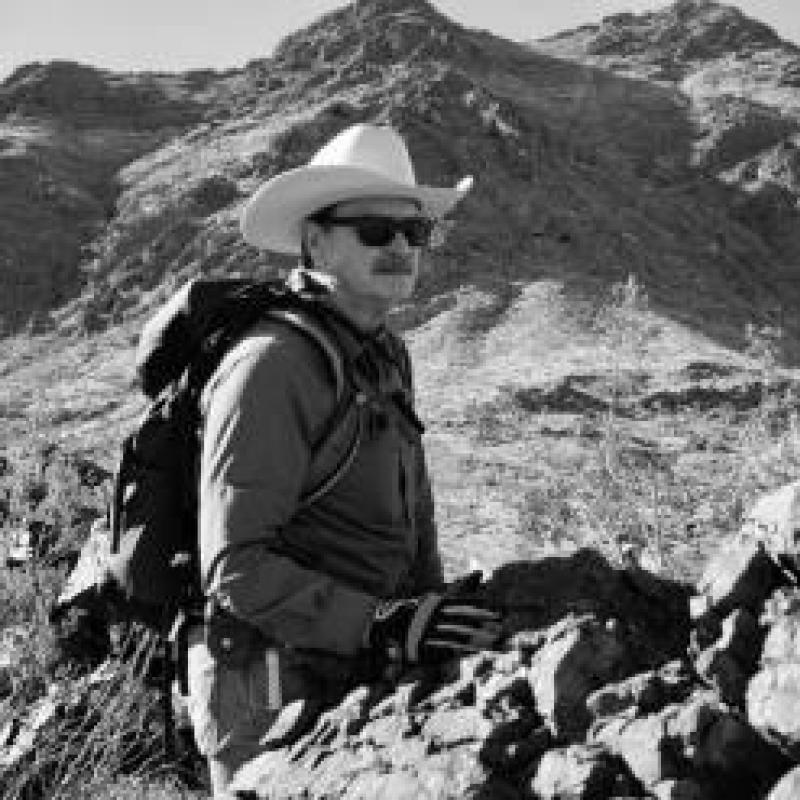David Bero
Emeritus Lecturer

Contact
SSU Geology Professor Publishes Geologic Maps of Southern Marin County, CA
Geologic maps of Ring Mountain and the Tiburon Peninsula by David Bero of Sonoma State University are the culmination of nearly 20 years of geologic fieldwork.
Geologists around the world are known for their love of the outdoors. Professor David Bero, who has been lecturing in the Department of Geology at SSU for the last 8 years, is no exception. He has spent nearly every weekend during the last 20 years hiking the trails and enjoying the sweeping vistas of Marin County, CA. What distinguishes him from the multitude of people recreating on the same land is his intense focus on the rocks beneath him. David doesn’t just go out for hikes and wander aimlessly along the trails. His mind is active, his practiced eye notices small details, and he routinely stops to examine rocks with a small magnifying glass. In short, he’s out conducting geologic field work.
“I have lived and worked in the Bay Area for much of my career,” says David, a resident of southern Marin. “Not all geologists are fortunate enough to have world-class geologic localities right out their front door. I have always been drawn to the beauty of Marin County and the rocks of the Franciscan Complex underlying the area. That combination has kept my interest and has remained my research focus for over two decades.”
The rocks of the Franciscan Complex that David speaks of compose the remnants of an ancient subduction zone, which is the type of plate boundary where oceanic crustal rocks are pushed down to great depths beneath a continent, in this case the North American Continent. During this process, the rocks that David studies were altered (metamorphosed) by increasing heat and pressure and later moved back toward the surface along a series of complex faults. Sometimes during this process, rare and very ancient rocks composed of unusual minerals, called high-grade metamorphic blocks, are found associated with these previously subducted rocks. “The unique thing about Ring Mountain is the concentration and variety of the high-grade metamorphic blocks that occur there,” says David. “The variety of temperature and pressure conditions recorded by these metamorphic blocks has made this area a key laboratory for a better understanding of the subduction process.”
Over the years various geologists have worked on a number of projects attempting to sort out the geologic details of Ring Mountain and Tiburon Peninsula area; David is one of them. “I’ve spent many days out there during the past 20 years mapping and trying to sort out the variety of rock types and multiple fault offsets that have occurred there which represent about 160 million years of local earth history. I hope that these geologic maps and accompanying report will be useful for those in the geologic community considering, or actively involved in research in the area, as well as those teaching or leading field trips in one of the classic area of the Franciscan Complex.”
Professor Bero’s geologic maps of both Ring Mountain and the Tiburon Peninsula, as well as a detailed report on the geology and structure of the area, Map Sheet 62, can be purchased on the California Geological Survey’s website.

